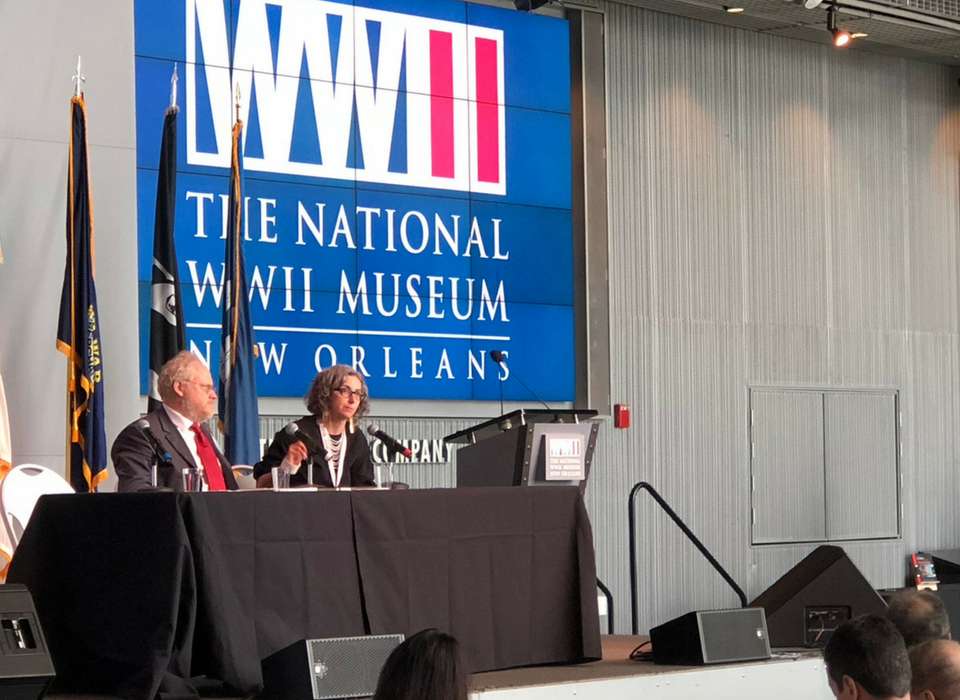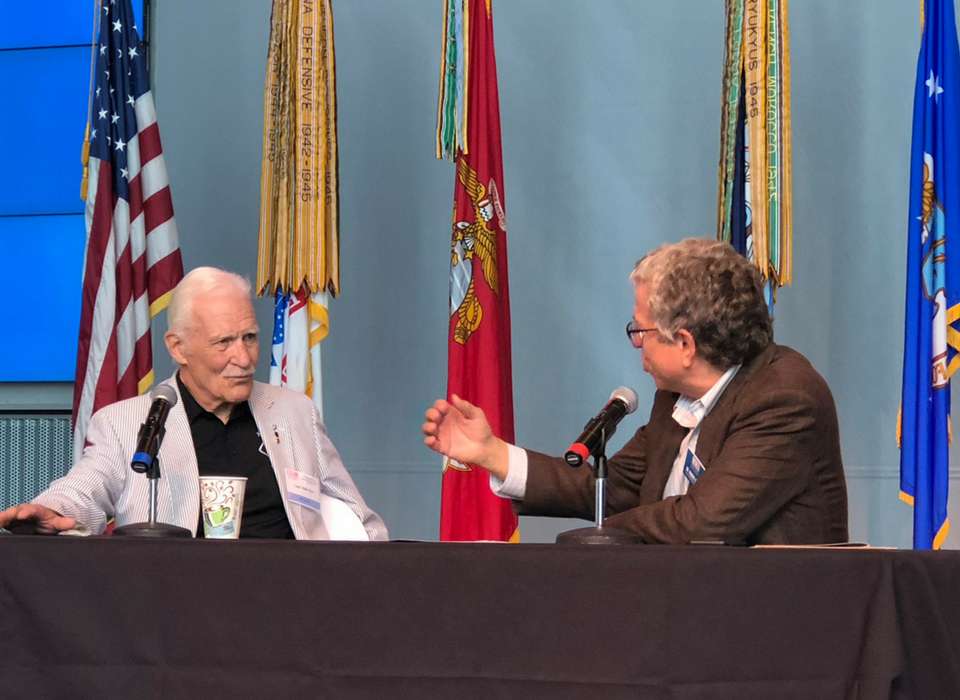Marsha Gordon, PhD, of North Carolina State University and author of Film is Like a Battleground: Sam Fuller’s War Movies, and Nicholas Cull, PhD, of the University of Southern California and President of The International Association for Media and History, kicked off the Museum’s 20th anniversary of Saving Private Ryan Symposium on June 7, 2018. Their topic: "D-Day in Film: Building up to Ryan."
Fuller served with the 1st Infantry Division (nicknamed "The Big Red One") for nearly three years during World War II, Gordon said, then returned to postwar life as a filmmaker. “The war is the thing that defined his life,” said Gordon. “And it’s the thing he cared about most.”
Gordon compared the D-Day scenes in Fuller’s 1980 The Big Red One and 1962’s The Longest Day—both of which served as influential precursors to the memorable Normandy landing scenes in 1998’s Saving Private Ryan.
“We can trace, I think, an arc from The Longest Day to The Big Red One to Saving Private Ryan,” Gordon said. “I feel very strongly that had he lived to see it, Fuller would’ve admired (Saving Private Ryan’s beach-landing) scene tremendously, and been a little envious of it.”
Cull presented primarily on The Longest Day—both the 1962 film and the 1959 Cornelius Ryan book of the same title on which the film is based. (Ryan covered the war for The Daily Telegraph.) “To me, the point of thinking about a history film is not to use that film as a way to understand the moment that it depicts—so in this case, I’m not trying to understand 1944—but rather the moment in which the film was made,” Cull said.
He explains further in the fascinating presentation below.
Presented by the Museum’s Institute for the Study of War and Democracy, the Symposium totaled four sessions. Watch them all here. Shop the Museum Store for a signed copy of Gordon’s book. Learn more about upcoming Museum programming here. Learn more about the Museum’s Institute for the Study of War and Democracy here.

